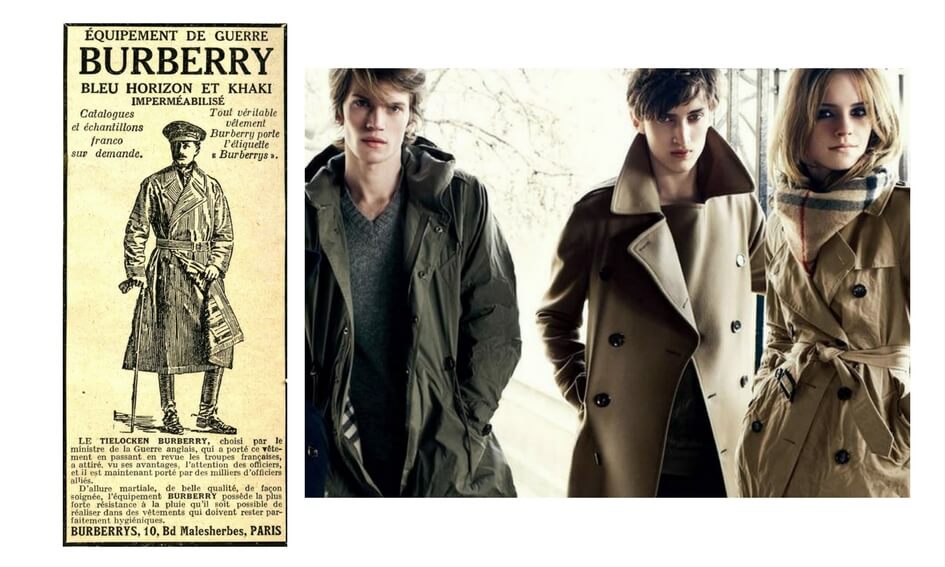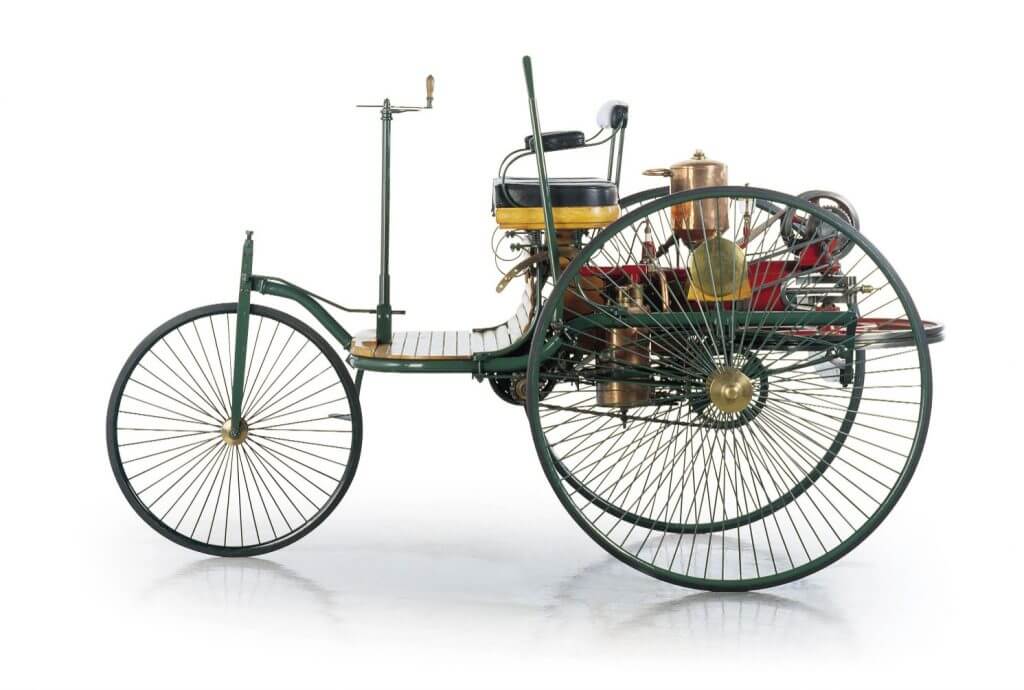Brands are like people: the story always comes from genetics. The genes of a brand are its values. That determines how they look, what they do, how they speak, how they move with the times. This is true for every person, for the personal brand of every solopreneur, for every small and large company and for the megabrands anyway.
Just as people change over time, but thanks to their genetics always remain the same, brands also change, because sooner or later no brand is spared the need to actively sharpen its profile, readjust its story or even launch a complete relaunch. And thanks to its genetics, it will always remain the same.
The day of change will come.
For brands that have been around for a long time, the day of change comes simply because times - people's attitudes and expectations - change over the years.
The good old audience is becoming the good new audience, which may well be reflected in age. After all, 40 is the new 30 and Paul McCartney 75. (Note for Generation Y and Z: Paul McCartney is the guy who recorded "FourFiveSeconds" with Kanye and Rihanna and shortly before that invented pop music with three friends ...).
New channels - new opportunities.
The completely changed media landscape also offers brands ample opportunity for (re)discovery. Because while in the past you could only use a few media that were used by many different types of people, today there are many media, especially online, through which you can reach very specific types and no one else. So why not interpret your own brand story for this purpose and expand your audience group if the product allows it in principle?
Very often, story sharpening is also necessary because it was not sharp enough in the first place - i.e. it offers too little distinctiveness or relevance.
Don't be fashionable, be modern.
Or the story was far too sharp from the start, stuck in time and too fashionable. Then exactly what happens to everything fashionable happens: the world turns into the opposite and you are unfashionable.
In general, anyone who works in fashion can tell you a thing or two about climbing up and down the minor scale. After all, when it comes to fashion, people buy meaning above all else, and thus the spiral of brand management turns from day 1 of the company's founding.

The prestigious Burberry brand came of age and skilfully transformed itself from the coat of the dusty Latin teacher to the basic outfit of the new Brit generation. And thus actually back to the roots again.
It happened to me time and again during my time in classical advertising that, especially when it came to corporate designs, the taste of the times dictated the result and after the initial joy over the perfect logo, you suddenly had a particularly unfashionable one stuck to the door. Fashionable is not modern, knowing this difference makes life easier ...
The change must strengthen the brand identity.
The justified concern is: If we change as a brand, won't we throw everything that has been there into the rubbish? The entire development work, the invested capital? And our regular customers along with it?
Basically, the following applies to everything you do in marketing communication: you need a stable brand story that is defined by a clear value system. If you have that, then your brand can grow and be reinterpreted in the changing times without being damaged. It is unavoidable that customers will be lost in the process, but the gain of new customers will always outweigh the loss.

When attitudes towards products and entire industries change permanently, all brands are affected. Strong genetics ensure identity in change.
The times they are a-changin.
The automotive industry has been confronted with real paradigm shifts over time and is now facing a fundamental change overall. When I was a child, a good car was recognised by its performance and comfort, but soon safety was the focus of interest, followed by consumption and everything to do with environmental protection. And tomorrow, or already today, we have known for a long time: those who build cars do not build cars, but provide mobility, independence, freedom, etc.
For the entire industry - as for all of us - the infinite wisdom of Bob Dylan applies: "Then you better start swimmin' or you'll sink like a stone for the times they are a-changin' ..." But even in this new light, BMW can continue to be a joy to drive, Audi can retain its lead through technology, and Mercedes can make The Best or Nothing , just as it did from the very beginning.
The genetic brand code often lies in the founding dream.
The best or nothing was Gottlieb Daimler's founding motto when building the first universally usable petrol engine, and this motto became the official Mercedes claim again in 2010. A strong announcement, a clear commitment both internally and externally, a handhold on the journey through the centuries. Also and especially because the car public is changing.
Because Mercedes apparently recognizes that the potential audience has changed massively in terms of its attitudes to life and life models, it goes without saying that Stuttgart is responding. With a campaign that addresses the world of young adults under #growup. To the successors of Generation Golf, the founding members of Generations Y or Z - you never really know with today's youth. Just as this generation itself doesn't really know where it belongs. Some of them have been adults for a long time, but perhaps never in their heads. Some are already in an income bracket where their parents would have liked to be all their lives, but definitely not in terms of lifestyle.
In extraordinary films, Mercedes shows real representatives of this generation. A life between cool and solid, between having responsibility but not really wanting it, a life in constant change. Humour and tragedy in the same breath. Growing up is not for beginners.
The spirit plays the main role - the product the supporting role.
It is a multitude of topics that move these people, and they also like to move around in a Mercedes. The cars play a supporting role and are a natural part of it.
In Germany, the actor Heiner Lauterbach is relied on as the V-man between the new generation world and the formerly young, who meets the actual protagonists in all the films. Yes, the Lauterbach one likes to admire for the fact that he has been able to prevent himself from really growing up for over 60 years.
Will this scare away the Mercedes regulars? Some probably will, some will certainly discover the Lauterbach in themselves, forget their too many kilos and prefer to feel better with too little hair. Most of them will not be reached by the campaign at all because they do not come into contact with it thanks to their media use.
Why Mercedes can't manage the exercise of hanging The Best or Nothing in the stories is frankly a mystery to me, because it would be anything but a contradiction. I think it would even be a powerful breath from the turbocharger for the campaign. Isn't part of #growup also recognising quality(s), gaining an eye for the essential and becoming more like yourself and your values?
It is also a pity that the very real people, the customers, are not given any space for themselves and their representation. On the contrary: the Mercedes Guide to Growing up leads directly to the vehicle models and unfortunately that is exactly what the generations addressed do not want: they do not want brands that want to aggressively sell them something.
Made for Me instead of Buy Me!
The well-known made-for-me feeling is particularly important to this generation. As unfathomable as their buying behaviour may be, this much is certain. And #growup would definitely have the horsepower under the bonnet that it needs to create a movement and juicy ROI - Return on Involvement.
We, who as a rule do not have a mega brand on the workbench, but often work as a small or individual company, ultimately have the same situation as Mercedes.
-
Every brand needs its updates - sometimes smaller, sometimes bigger - and sometimes even a generational change.
-
We need to know our brand values and thus our brand story, because this secures the identity and thus the material value of our brand.
-
The variety of media channels even helps to interpret our brand story in different ways and thus precisely address a broader audience than before.
-
Let's give our audience the opportunity and space to tell about themselves while they tell about us because we share the same values.
-
And: How can we interpret and condense our story so that it could be printed as a message on a T-shirt with which the wearers want to tell the world something about themselves?
-
This keeps brands fresh and brings them two valuable, almost priceless, rewards: Time with Brand and Return on Involvement.
Whether in the S-Class or on foot, the same applies without restriction: No Story. No Glory.
